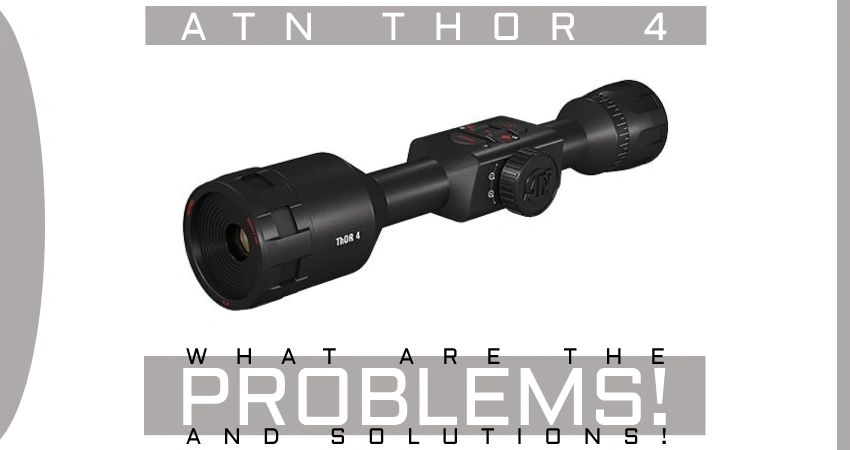The Glock 44, known for its reliability and performance, has garnered a strong following among firearm enthusiasts. However, like any piece of machinery, it’s not immune to occasional glitches.
Whether you’re encountering jamming, accuracy, or reliability issues, we’ve got you covered. We understand that these problems can be frustrating, hindering your shooting experience.
But fear not, as we delve into the topic, we’ll explore common reasons behind these setbacks and suggest practical solutions to help you get back on track.
So, if you’re curious about tackling Glock 44 problems head-on, then keep on reading! By the end of this guide, you’ll have a better understanding of these issues and armed with the knowledge to resolve them. Let’s dive in!
The Glock 44 Problems: Addressing Concerns and Providing Solutions
If you’re an avid shooter or firearms enthusiast, you’ve likely heard of the Glock 44. Introduced in 2019, this compact handgun quickly gained popularity for its combination of Glock reliability and .22LR affordability.
However, as with any new firearm, the Glock 44 has not been without its share of concerns and issues. Here are some of those issues that you should be aware of.
1. Extractor Issues
One common problem that Glock 44 owners have encountered is related to the extractor. The extractor is responsible for gripping and removing spent casings from the chamber. Users have reported issues with failure to extract (FTE) and failure to eject (FTEJ), leading to stoppages and malfunctions. Here’s what you can do to mitigate these problems:
- Clean and inspect the extractor regularly, removing any fouling or debris that may hinder its performance.
- Use high-quality ammunition known for reliable extraction, as cheap or low-quality ammo can contribute to extraction issues.
- Ensure proper lubrication of the extractor and other critical moving parts.
2. Magazine Problems
Another area of concern for Glock 44 owners revolves around magazine-related issues. Some users have experienced problems related to magazine feeding and cartridge alignment. Here are some steps you can take to address these issues:
- Inspect the magazine for any signs of damage or deformation, particularly around the feed lips and follower.
- Clean and lubricate the magazine regularly to ensure smooth and consistent feeding.
- Try using different brands or types of ammunition to see if the magazine problems persist with specific cartridges.
3. Slide Failure
A small number of Glock 44 owners have reported instances of slide failure, where the slide fails to fully cycle or becomes stuck in a partially open position. If you encounter such issues, consider the following troubleshooting steps:
- Inspect the recoil spring assembly for any signs of damage or wear. Replace it if necessary, as a worn-out spring can affect slide function.
- Ensure that the recoil spring assembly is correctly installed and properly seated within the slide.
- Keep the slide and other critical areas clean and free from debris that may hinder its movement.
4. Accuracy Concerns
While the Glock 44 is not intended to be a long-range precision pistol, some users have expressed concerns about its accuracy, particularly at extended distances. If you’re facing accuracy issues, try the following:
- Experiment with different ammunition brands and bullet weights to find the most accurate combination for your Glock 44.
- Consider installing aftermarket sights or an optic to enhance your sight picture and improve shooting accuracy.
- Practice proper shooting techniques, including a solid grip, proper trigger control, and consistent sight alignment.
5. Overall Reliability
Though the Glock 44 is generally known for its reliability, some users have reported occasional malfunctions, such as failure to fire (FTF) or failure to feed (FTFeed). If you encounter reliability issues, here are some steps to help address them:
- Clean and lubricate your Glock 44 regularly to ensure its optimal performance.
- Familiarize yourself with the recommended ammunition for the Glock 44 and avoid using ammunition with known reliability issues.
- Test and break in your Glock 44 with various ammunition types to help ensure reliability with the ammo you intend to use.
6. Ammo Sensitivity
The Glock 44, like many .22LR firearms, can be more sensitive to ammunition than centerfire handguns. Some users have reported feeding issues when using certain types of ammunition. To mitigate these issues:
- Avoid using subsonic or low-velocity ammunition, as it may not provide sufficient pressure to cycle the Glock 44 reliably.
- Stick to high-velocity ammunition from reputable manufacturers known for their reliable performance.
- Consider using jacketed ammunition instead of lead bullets, as the latter can sometimes cause fouling and feeding issues.
Some Advice
By following the solutions and suggestions provided in this guide, you can overcome the common problems associated with the Glock 44 and enjoy a more trouble-free shooting experience.
Remember, regular maintenance, proper ammunition selection, and consistent training are key to maximizing the performance and reliability of any firearm, including the Glock 44.
Frequently Asked Questions
1. Is the Glock 44 prone to jamming frequently?
Jamming is not a common problem with the Glock 44. However, it is important to use high-quality ammunition and properly maintain the firearm to minimize the likelihood of any jams.
2. Are there any reported issues with the Glock 44’s accuracy?
Generally, the Glock 44 has good accuracy. However, some users have reported occasional accuracy issues. This can often be attributed to individual shooter technique or ammunition quality rather than a problem with the firearm itself.
3. Do users experience consistent failure to feed with the Glock 44?
Failure to feed issues are not commonly reported with the Glock 44. In most cases, these issues can be resolved by ensuring the magazine is properly seated and clean, and by using high-quality ammunition.
4. Is the Glock 44 prone to frequent ejection problems?
The Glock 44 is generally reliable when it comes to ejection. However, some users have experienced occasional ejection issues, usually due to limp-wristing or using low-power ammunition. Proper grip and using standard or high-velocity ammunition can help minimize these problems.
5. Are there any known durability issues with the Glock 44?
Overall, the Glock 44 is a durable firearm. However, some users have reported occasional slide-related issues, such as cracks or damage. These occurrences are rare and can often be attributed to individual misuse or exceptionally high round counts. Glock offers a warranty to cover such issues.
Final Thoughts
Glock 44 has faced several problems since its release. One of the major issues users encountered was the gun’s tendency to experience misfeeding. This problem arises from the pistol’s unique design, which uses a blowback action instead of a traditional locked-breech system.
Despite being marketed as a reliable and accurate training firearm, the Glock 44’s performance shortcomings have left many disappointed.
In conclusion, while the Glock 44 offers a familiar Glock platform for practicing with .22 caliber ammunition, it is not without its problems. It is important for potential users to consider these drawbacks before making a purchasing decision.






